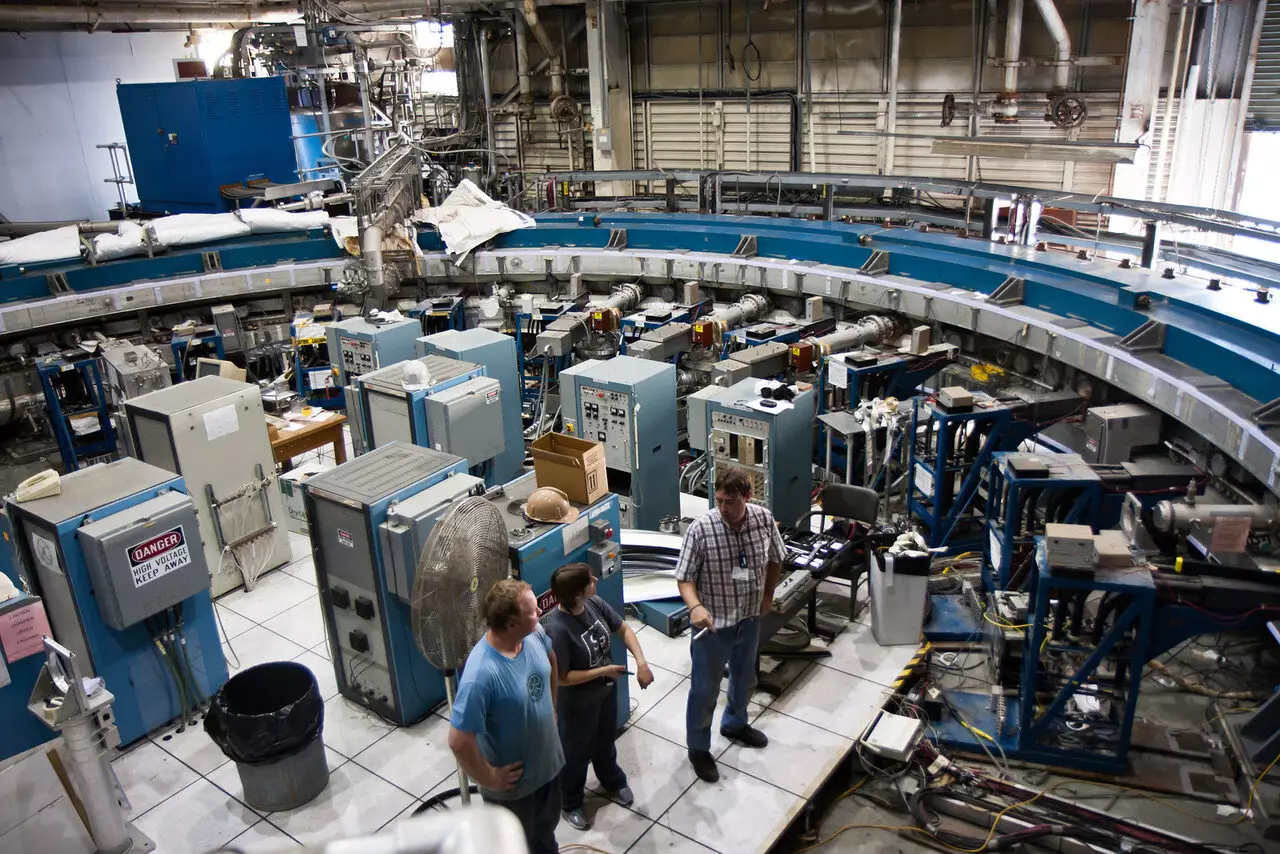The quest for ever-increasing precision in measurements of fundamental particles has reached new heights with the recent work of the Muon g-2 Collaboration. This collective of physicists has successfully measured the magnetic moment of the muon to an impressive precision that more than doubles previous records. Conducted at Fermilab in the United States, this groundbreaking experiment has implications not only for our understanding of muons but also for the broader implications it holds for particle physics and the Standard Model.
Muons, which are often colloquially referred to as “heavy electrons,” are indeed quite similar to electrons. However, they are over 200 times heavier, which amplifies their sensitivity to phenomena that are otherwise negligible for lighter counterparts like electrons. The specific experiment involved cycling muons in a particle storage ring at speeds approaching that of light, subjecting them to a magnetic field approximately 30,000 times greater than Earth’s. The muons’ magnetic moment interacted with this external field, causing precession—an effect reminiscent of spinning tops.
Understanding the nuances of how this precession was measured provides insights into both the experiment’s complexity and its significance. While the muons coursed through the 7.1-meter diameter storage ring, their precession frequency was meticulously compared to their cycling frequency. This allowed the collaboration to determine the muon’s “anomalous magnetic moment” with extraordinary accuracy, reaching a precision of 0.2 parts per million.
This measurement isn’t an isolated achievement. Rather, it is part of an ongoing series of experiments aimed at refining the understanding of the muon’s magnetic characteristics dating back to foundational work at Brookhaven National Laboratory in 2006. Each successive effort has advanced the precision metric, culminating in a new benchmark that is 2.2 times better than previous estimations made by the same research team.
The breadth of the Muon g-2 Collaboration is noteworthy, consisting of 181 scientists from seven countries associated with 33 different institutions. This international cooperation highlights the global nature of contemporary particle physics research. Their findings, published in the esteemed journal Physical Review D, showcase a determined effort to better comprehend the behavior of leptons—fundamental particles that include both electrons and muons.
This research hinges not just on the muons but also on the underlying theories. The electron’s magnetic moment has been established with remarkable precision; a significant achievement by physicists utilizing quantum electrodynamics (QED) theories grounded in complexity and mathematical elegance. By tapping into these theoretical frameworks, including advanced calculations involving Feynman diagrams, scientists seek to unveil any discrepancies that could illuminate aspects of physics beyond the Standard Model.
The findings from the muon measurements raise crucial questions about established theoretical predictions. With its heavier mass, the muon can be up to 43,000 times more sensitive to potential new particles appearing in realms beyond the Standard Model. Effectively, this offers a tantalizing glimpse into the possible existence of phenomena such as supersymmetry or even string theory.
However, predictions of the muon’s anomalous magnetic moment are more complex and fraught with challenges compared to those for electrons. While the QED contributions are well understood, the complications arise from hadronic effects—the interactions involving protons, neutrons, and mesons. As noted by the collaboration team, limitations lie in the understanding of vacuum fluctuations brought on by strongly interacting particles. These contribute critical corrections necessary for the theory to align with the burgeoning data they are collecting.
The meticulous effort that went into gathering data, including addressing systematic errors such as transient magnetic fields during muon injection, demonstrates the challenges inherent in the field. The latest runs between 2019 and 2020 amassed more than four times the amount of data compared to earlier runs, yet a direct theoretical comparison remains elusive. Complications related to corrections from hadronic effects indicate that further experimental data will be essential for clarifying these concerns.
With three more years of data still awaiting analysis, the collaboration anticipates that this will yield improved statistical precision—potentially doubling the data’s impact again. As the Muon g-2 project advances, the results may not only refine existing theories but also push the boundaries of current understanding, making this frontier of physics both an exciting and pivotal area for future research.
The latest advancements in measuring the muon’s magnetic moment reflect a critical intersection of precision experimentation and theoretical exploration, marking significant progress in the quest to decipher the fundamental laws governing the universe.


Leave a Reply